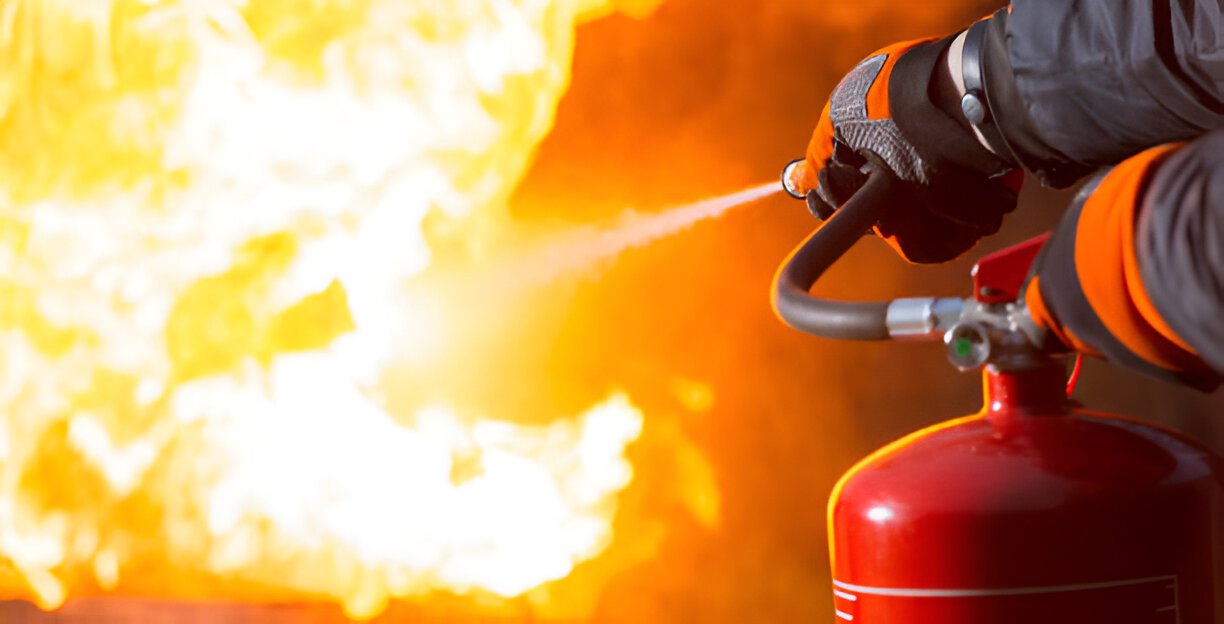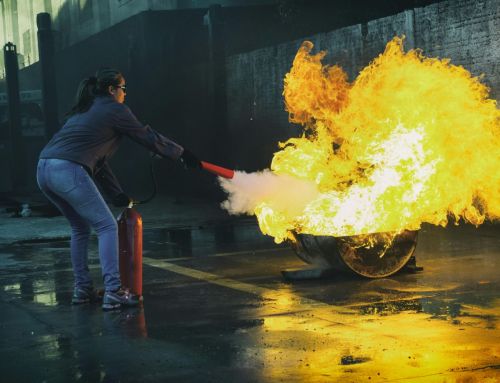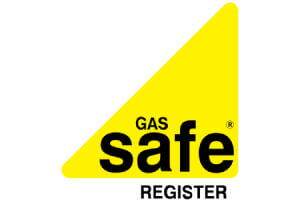
In the realm of property management, the importance of a Fire Safety Certificate cannot be overstated for landlords. This certification serves as a key indicator of a property’s adherence to stringent fire safety standards, which are essential not only for legal compliance but also for the safeguarding of tenants’ lives and the protection of property investments. However, the process of obtaining and maintaining this certificate involves a series of meticulous steps and adherence to specific regulations that vary by location. As landlords navigate these requirements, they must consider the potential ramifications of non-compliance, which raises the question: What are the most common oversights landlords make in this process, and how can they be avoided, Let’s understand Fire Safety Certificate for Landlords.
Fire safety certificate for landlords
Obtaining a fire safety certificate is an indispensable requirement for landlords. This ensures compliance with local fire safety regulations and safeguards the well-being of tenants. This certification process involves thoroughly assessing the property to identify and mitigate potential fire risks.

Landlords must understand that the primary aim of this certification is not merely regulatory compliance but also the enhancement of safety measures that protect both the physical property and its occupants.
The evaluation focuses on several critical areas, including but not limited to, the adequacy of fire exits, the integrity and accessibility of fire escape routes, the functionality of fire alarms and extinguishers, and the regular maintenance of all fire safety equipment.
Landlords must ensure these systems are not only in place but are also regularly tested and maintained to meet stringent safety standards.
Moreover, tenant responsibility should be clearly outlined in lease agreements, emphasizing their role in maintaining the safety of their living environment.
Tenants must be informed about the proper use of fire safety features, restrictions on potentially hazardous activities, and the importance of reporting any safety concerns to the landlord promptly.
This collaborative approach significantly enhances overall safety and ensures compliance with all relevant fire safety mandates.
Why Landlords Need a Fire Safety Certificate
While the process of obtaining a fire safety certificate involves rigorous evaluation and adherence to safety protocols, the underlying reasons for its necessity are equally fundamental for landlords. This certification not only demonstrates compliance with specific fire safety standards but also significantly mitigates the risk of fire-related incidents within rental properties.
It serves as a crucial tool in ensuring that the structural integrity of the building and the safety measures in place are adequate and operational.
The presence of a fire safety certificate enhances tenant awareness regarding the safety features of the property. It reassures tenants that the premises they inhabit are regularly inspected and deemed safe, which can be a decisive factor for prospective renters evaluating their housing options.
Moreover, a certified property often results in higher tenant retention rates, as safety becomes a compelling value proposition.
Additionally, this certification necessitates that landlords have well-documented emergency procedures, which are vital in the event of a fire. It ensures that escape routes are marked and free from obstruction, fire fighting equipment is accessible, and that all occupants are familiar with a clear plan of action in case of an emergency.
This proactive approach not only protects lives but also significantly reduces potential liabilities for landlords.
Legal Requirements for Landlords in the UK
In the UK, landlords are legally obligated to ensure the safety and compliance of their rental properties with stringent fire safety regulations. This duty encompasses a comprehensive understanding and mitigation of fire hazards to protect tenant rights and well-being.

The framework for these obligations is primarily outlined in the Regulatory Reform (Fire Safety) Order 2005, which mandates landlords to conduct regular risk assessments that identify potential fire hazards within their properties.
Landlords must address identified risks promptly, implementing appropriate fire safety measures. This includes but is not limited to, ensuring the availability and functionality of fire detection systems, maintaining clear escape routes, and providing fire extinguishers by the size and layout of the property.
These actions are crucial not only for compliance but for safeguarding the lives of occupants.
Furthermore, failure to adhere to these legal requirements can result in severe penalties including fines and imprisonment.
Landlords must stay informed of any changes in legislation and ensure their properties remain compliant at all times. This proactive engagement demonstrates a commitment to both legal compliance and the prioritization of tenant safety, reinforcing the fundamental rights of tenants to a safe living environment.
Types of Fire Safety Certificates
To accommodate the varied needs of different properties, several types of Fire Safety Certificates are issued to landlords. These documents are critical in ensuring that all residential buildings adhere strictly to fire safety regulations, safeguarding both the physical property and its occupants.
The first type is the Comprehensive Fire Safety Certificate, designed for larger residential complexes. This certificate requires a detailed examination of all fire safety measures in place, from fire alarms to escape routes and emergency lighting systems. It is often preceded by extensive safety audits that assess the building’s compliance with current fire safety standards and identify any potential fire risks.
Another type is the Basic Fire Safety Certificate, suitable for smaller properties or those with fewer occupants. This certificate focuses on the essential elements of fire safety, ensuring that basic protections are effectively implemented and maintained.
For properties undergoing significant renovations or construction, a Temporary Fire Safety Certificate might be necessary. This certificate allows landlords to continue certain types of occupancy while ensuring that temporary safety measures are sufficient to manage fire risk during the transition period.
Each type of certificate plays a pivotal role in a comprehensive fire safety strategy, tailored to the specific needs and risks associated with different property types.
How to Obtain a Fire Safety Certificate
Obtaining a Fire Safety Certificate requires landlords to meticulously follow a series of regulatory steps to ensure their property meets all mandated fire safety standards. The process begins with conducting a comprehensive fire risk assessment. This assessment must identify potential fire hazards within the property and evaluate the effectiveness of existing fire safety measures. It serves as the foundation for all subsequent actions aimed at achieving compliance.

The next step involves implementing necessary modifications based on the fire risk assessment findings. This might include installing smoke alarms, ensuring accessible fire exits, and providing adequate fire-fighting equipment. Additionally, landlords must arrange for professional fire safety training for all residents, emphasizing the importance of regular drills and proper use of fire safety equipment.
Upon completion of these steps, an application for the Fire Safety Certificate can be submitted to the local fire authority. The authority will conduct a thorough inspection to verify that all the required standards are met. Below is a table summarizing the key steps:
| Step | Description | Outcome |
|---|---|---|
| Fire Risk Assessment | Evaluate hazards and existing measures | Implementation plan |
| Implement Safety Measures | Install and upgrade safety equipment | Enhanced safety |
| Apply and Verify | Apply and undergo an inspection | Certificate issuance |
This structured approach ensures that landlords not only comply with legal requirements but also protect the lives of their tenants.
Consequences of Non-Compliance
Why should landlords adhere strictly to fire safety regulations? The answer hinges significantly on the severe consequences of non-compliance, which are manifold and grave.
Primarily, failing to meet fire safety standards can lead to substantial financial penalties. These are not merely nominal fees; they are designed to be sufficiently punitive to ensure compliance is taken seriously. Regulatory fines can escalate depending on the severity and frequency of the breaches, potentially running into thousands of dollars, thus straining the financial standing of any landlord.
Moreover, the implications extend beyond financial repercussions. Non-compliance jeopardizes tenant safety, exposing residents to potential hazards that could result in life-threatening situations. This neglect of duty can lead to legal actions, including but not limited to, lawsuits for damages arising from injuries or even fatalities. The legal costs, coupled with possible compensatory and punitive damages, can be financially debilitating.
Furthermore, landlords may face reputational damage, which can significantly deter potential tenants, thereby affecting the profitability and operational viability of their rental business.
This interplay of financial loss, legal liability, and reputational harm underscores the critical nature of adhering to fire safety regulations, emphasizing that compliance is not optional but essential.
Maintaining Fire Safety Standards
Maintaining rigorous fire safety standards is a fundamental responsibility for landlords, ensuring both compliance with regulations and the safety of tenants. To uphold these standards, landlords must implement robust fire prevention strategies and ensure continuous tenant education on fire safety procedures. This proactive approach not only adheres to legal requirements but also fosters a secure living environment.
Effective fire safety maintenance involves regular inspections and updates to fire safety equipment, clear documentation of safety checks, and responsive measures to any identified risks. Landlords should prioritize these practices, as they are critical in preventing potential fire hazards.
To resonate emotionally with the importance of these standards, consider the following table illustrating the outcomes of diligent maintenance versus negligence:
| Aspect | Maintained Standards | Neglected Standards |
|---|---|---|
| Tenant Safety | High safety and peace of mind | Risk of harm and anxiety |
| Property Integrity | Preserved condition | Potential severe damage |
| Compliance | Legal adherence and respect | Legal penalties and fines |
These contrasts underscore the crucial role of landlords in safeguarding lives and properties through strict adherence to fire safety mandates. Tenant education further enhances this framework, promoting a culture of safety and awareness among residents.
Conclusion
In conclusion, securing a Fire Safety Certificate is imperative for landlords to fulfill legal obligations and uphold tenant safety. It mitigates risks and enhances property management through rigorous adherence to fire safety regulations. Non-compliance not only exposes landlords to legal and financial liabilities but also jeopardizes tenant safety. Therefore, maintaining and upholding fire safety standards through regular assessments and updates is essential for ensuring long-term compliance and safeguarding the well-being of all occupants.
About the Author: LandlordCertificate
Related Posts
Get Social
Recent Posts
- Fire Risk Assessment Review as a Driver of Stronger Safety Control
- Comprehensive EICR London Services for Every Property
- System Planning for Large Buildings with Fire Alarm Installation
- Fire Service Fire Risk Assessment for Stronger Safety Management
- Electrical Risk Clarity Improved Through an EICR Report













